-
Posts
6,424 -
Joined
-
Last visited
Content Type
Profiles
Forums
Store
Help Articles
Posts posted by Richard Kilgore
-
-
-
Late note: Yesterday I made another matcha smoothie. Tasty and has some matcha zip to it. Also continued with my Adventures in Gyokuro Brewing in the Japanese Green Tea topic.
-
Thanks for the detailed notes, Chris. I tried drinking this tea too close to my gyokuro explorations and it is not a pleasant mix. I'll give the Darjeeling a better chance in the next day or so.
-
Today I am enjoying a Phoenix Mountain Dan Cong Oolong from The Cultured Cup, brewed in a half-filled larger Yixing of indeterminate age, but made with good clay that is extinct - that is, no longer mined. I am brewing in a manner similar to what cdh prefers, a modified gong fu cha approach using about twice as much leaf as I would brewing western style, so 5 g to about 200 ml water, 195 F, for 2 minutes first infusion. I know this leaf well and it will go for as many as 9 infusions brewed this way.
So, what's brewing in your part of the eGullet Society universe today?
-
Adventures in Gyokuro Brewing, Part III
This evening I brewed using a modification of the yuuki-cha 3 Minute Brewing method. Again I used 4 g leaf instead of 6 g because this is a non-organic Gyokuro I am using, and 4 g is my best guess as to an appropriate amount. The first infusion starts out with an amazingly low temperature of 104 F. Yes, that's not a typo -- 104 F. For 3 minutes. The second and third infusions are just my best winging it guesses based on experience.
1: 180 sec, 104 F - sweetly vegetal and thick mouthfeel. Very nice and probably the nicest first infusion I have gotten out of this leaf so far.
2: 180 sec, 104 F - vegetal and sweet, but thinner. Not as interesting, blah. Wonder if I used more water than I thought I did?
3: 60 sec, 122 F - sweet, vegetal, thick and the infusion I liked best in this series.
Drinking Gyokuro at this 104 F brewing temperature must be an acquired taste. At this point it's just weird. Not hot, not warm, not iced, just floating somewhere out there in not quite warm temperature land. Not unpleasant, just really not-familiar territory.
I have a very little bit of this leaf left that I may play with intuitively, but the next step is ordering a proper houhin for Gyokuro brewing from Dan at kuuki-cha.com, as well as one of his good organic Gyokuros. I'll be able to report on this in two or three weeks.
Any and all tips from Gyokuro drinkers more than welcome.
Edited: to note that I did a fourth infusion at 127 F for 90 sec and it was delicious. And to add that there was no detectable astringency in any of the four infusions.
-
The program was titled "In Kenya, Tea Auction Steeped in Tradition, Gentility".
In the cool hills high above Nairobi, Kenya, where the people live among the clouds, there are giant tea trees more than a hundred years old. They include the first tea trees ever planted in Kenya, back when it was called British East Africa.Today, Kenya exports more black tea than any other country in the world. And as NPR's Gwen Thompkins reports, the Mombasa Tea Auction may be one of the last places on earth where Old World manners prevail.
Here's a link to the audio: click.
And here's the transcript: click.
Thanks for the find, baroness.
-
If your tortillas are blackened and your cheese is not melted, it sounds like you are heating the pan too hot. Lower and slower. That should take care of the ingredients sticking to the cheese and tortillas. Unless I am misunderstanding the situation.
-
Started with an Assam from TCC this morning. Then brewed a Teance gyokuro for my Adventures in Gyokuro Brewing in the Japanese Green Tea topic. Finally, I think, I am brewing another Pai Mu Tan white tea I picked up at TCC last week. It's from their new "Cup of Value" line. More on that soon in the White & Yellow Tea topic.
-
Me too, Chris. And Franey had a follow up book called something like "More 60 Minute Gourmet" that I also found useful.
-
A follow up note related to our discussion of the Teavanna store. I have been in this place probably a half dozen times in the past year, and every time I am accosted by a really pushy sales person. Not the same person, but it's some one every time I have been there. Even when I put out signals that I don't want help, just want to browse, the person persists. First they want to show me the cast iron pots - "best tea pots in the world" - no, attractive, but over-priced and arguably not all that great for any but black teas; you could actually get a very good teapot for what they charge for these things. If I even look at their Yixings (which are better for display than for brewing because cheaper clay is used on Yixings with fancy designs, they go into what is an obviously canned spiel about Yixing pots. The only thing I have found of interest there is tea cups and tea containers, so I have learned to walk in fast, ignore offers to sell me the moon, check out the teacups and tea containers and get out. I find it a little exhausting. I don't know if this is a chain-wide thing or just the management of the local store.
-
Adventures in Gyokuro Brewing, Part II
Today I brewed using a spin on the yuuki-cha.com 2 Minutes Brewing method. Since the Gyokuro I am brewing is not organic I reduced the amount of leaf. and based on my impressions using the Beginners Brewing method (see above), I decided to use 4 g in 2 ounces of water for the first infusion. The water temp is lower this time, the lowest at which I have ever brewed any tea. The second and third infusion parameters I based on my limited past experience.
1: 2 min, 122 F - strong, vegetal in an unpleasant way to me, some faint background sweetness overpowered by the vegetal component. Astringency came on in the after taste.
2: 2 min, 122 F - sweet over vegetal, but the vegetal still not to my liking; this is not a sweet asparagus flavor, just veggie.
3: 1 min, 140 F in 3 ounces water - nicely sweet over a pleasantly vegetal flavor, very little astringency. Liked this infusion the best.
I should note again that the tea merchant sites that I have used as starting guidelines for brewing this Gyokuro can not be held responsible for any of my fledgling attempts. Different tea and I have altered their directions and made a lot of it up as I go along. (This is similar to the trials and tribulations of cookbook authors, especially pastry and baking authors, when readers change three parameters of a recipe and then complain that it didn't turn out like the picture in the book.)
I suspect that with Gyokuros, as with most new teas, other folks play around with their brewing parameters in various ways until they find something that pleases them. They just don't usually write about their flailing on the road to that perfect, sweet gyokuro.
Seems I frequently enjoy the later infusions better than the first one. How is it for the other Gyokuro sippers here? Any brewing tips?
At least one more brewing method yet to come.
-
I should note also that I have no way of knowing if the Teance Uji Gyokuro from CM that I am learning on is the same Uji Gyokuro on the Teance site, since it is $195/lb at CM and $56 for 2 ounces on the Teance site. Didn't buy a pound of course; less than $10 gave me plenty to play with.
-
This is quite an odyssey. The water temps are so low that I'm surprised any bitterness comes through that.
Almost no bitterness at any point. Astringency, just a drying sensation in the mouth - yes. Since I drank so much in a short period of time, I have to assume that some astringency accumulated over the infusions, so that some of the astringency I detected would be less or little if I was just doing one brewing of this Gyokuro.
-
Started today with the Yunnan Imperial from TCC. Then a fine sencha from o-cha.com.
What teas are you all drinking today?
Followed by an after dinner shu pu-erh. This is a dirt cheap tuo that is better than it ought to be for as young as it is. It's a 2008 Nan Jian Tulin 803 Ripe Pu-erh tea tuo from Yunnan Sourcing on eBay.
-
And that is a good point about a glass kettle. As I wrote in another topic, I'd like to get a new teakettle that would pour more neatly than my basic revere. Do you know what brand/model your glass kettle is?
Yes, I addressed that very question over in the Let's See Your Teaware topic.
-
Right, sounds and color of the tea liquor can tell us a lot. I have found that I can usually hit temp within 2 degrees from listening to the sound and watching the bubbles in my glass water kettle.
-
WmC - Sounds like an interesting tea. Their brewing suggestions are broad (as are most). What brewing parameters are you using?
-
Started today with the Yunnan Imperial from TCC. Then a fine sencha from o-cha.com.
What teas are you all drinking today?
-
I see nothing to be gained by anything more than an aluminum disk in a stock pot. But you may have to give up showers while making stew.
-
There were a few posts regarding tetsubin cast iron tea pots (copied below) in the Show Us Your Teaware topic, and opinions about these vessels tend to vary considerably. What's your experience with tetsubin - lined and marketed as teapots, or unlined and traditionally used as water kettles?
I don't have any Chinese teapots. Instead, I prefer the tetsubin:
The Le Creuset of teapots -- almost literally. Enamelled cast iron, and will still be around long after I'm gone. Their main drawback is Le Creuset-like prices; they're not cheap.
The one pictured is the one I use for most everything, with the major exception of Lapsang Souchong; I have a cheap Chinese knock-off tetsubin for that. The capacity is about 16 ounces (475 ml). It's a quite nice dark blue color that wears to reveal the black enamel underneath -- the color isn't quite done justice by the photo.
Someday, I'll have another to dedicate specifically for green tea, and maybe another for whites. I'm not that fussy at the moment.
BTW, pictured next to the tetsubin are (on the left), a silver tip white tea (fluffy and actually somewhat fuzzy leaves), and on the right, some jasmine silver pearls.
That's a beautiful pot, but why do you prefer cast iron to porcelain and clay pots and what is it about these cast iron pots that you would want to dedicate several of them to various teas?
I'm curious as to the answer, as well. In Japan tetsubin are rarely used for brewing water much less for making tea (and then it's the lined tetsubin that are used). I've always seen the use of tetsubin for brewing tea as a Western affectation, but I'm curious if people really see a benefit (flavour-wise) to using tetsubin. The only benefit I can think of would be that it holds heat longer, but that would not necessarily improve the flavour of the tea (particularly since Japanese teas should be brewed in smaller amounts for best flavour).
-
There have been several mentions in this forum recently about brewing tea at work by Wholemeal Crank and nakji. So I am curious about how everyone else brews tea at work --
* Tea bags or whole leaf teas?
* Infuser cups or tea pots?
* Tea brewing machine?
* Tea tables for gongfu cha?
* Or what?
Is it a rush job to get some caffeine into your system? Or a pleasure? Or a pleasurable break in the day?
Does drinking tea effect your work in a positive way?
-
Interesting. Would you mind sharing which websites you use to order your Chinese tea?
And what about the customs? Don't the taxes drive up the cost prohibitively?
I did not go any further on that because it was way off the "tea in Paris" topic. But I purchase my Chinese teas here. They have the best quality by far.
There is a great deal of information on ordering Chinese, Japanese and Indian teas on-line from various tea merchants in the Coffee & Tea Forum. As well as discussion of the teas, brewing, etc.
-
The temps will go even lower on some of my next sessions.
I do need to add that I found small print instructions on the Central Market label for the Teance gyokuro: 3 tablespoons, 8 ounces water, steep for 1 minute at 140 F in glass or porcelain teapot. I may try that after the others, but it looks like a bit of a brief infusion for 140 F based on my experience with this leaf so far.
-
Adventures in Gyokuro Brewing
Gyokuro is considered to be the highest level of Japanese green tea and is expensive due to the special treatment it gets before and during harvest. The tea plants are shaded during the weeks leading up to the picking in order to make the leaf sweeter. I decided to buy a small portion of a Teance Uji Gyokuro at Central Market because it was convenient and I could buy a very small amount. Enough to learn on before going on to Gyokuro that I have more confidence in as to quality and freshness.
The teance.com site provided useless generic Japanese green tea brewing instructions. So I consulted a few sites that I am familiar with for ideas and the brewing sessions I'll be reporting on over the next day or two are based on my feeble attempts to follow these rather different sets of directions.
All the following brewing sessions used a Kuromatsu Tokoname teapot made by Tokoname craftsman Gyokko, Britta filtered water, a scale, a thermometer and a kitchen timer. The teapot holds 120 ml (4 ounces) to the rim, but only 2 - 3 ounces for brewing. The obiama 360 degree filter screen is very effective at holding back the leaves while letting the tea liquor through without clogging, but very slow pouring is helpful.
Kuromatsu Tokoname teapot made by Tokoname craftsman Gyokko
Obiami Filter
For my first session I winged it, loosely making up a brewing sequence based on what I recalled from visiting several vendor sites recently.
2.5 g leaf, 2.0 - 2.5 ou water with pre-heated teapot and cup
1: 120 sec, 140 F - more vegetal than sweet
2: 120 sec, 160 F - better balance, but thin
3: 60 sec, 150 F - sweeter, liked this infusion the best
Then I decided to attempt to follow specific vendor instructions as closely as I could, while also knowing that their Gyokuros may well brew differently than this one from Teance by way of CM.
This brewing session was based on directions on denstea.com which says: 2 - 4 ounces water, 2 teaspoons leaf, 140 - 160 F, for 2 - 2.5 minutes. Those are directions that cover quite a bit of brewing territory, and do not address later infusions, so I chose these parameters, based on past experience with a gyokuro-like sencha --
The 2 teaspoons weighed in at 2.7 g.
1: 2.5 min, 140 F, 2 ounces water - asparagus-vegetal, slight astringency, then creamy mouthfeel emrges with sweetness
2: 2.5 min, 140 F, 2 ounces water - creamy mouthfeel, sweet assparagus, slight astringency, very slight bitterness
3: 1.0 min, 150 F, 3 ounces water - sweeter, less vegetal, less astringency, nice.
4: 1.0 min, 150 F, 3 - 3.5 ounces water - reduced flavor, but still some ceaminess and vegetal sweetness
Yuuki-cha.com has an interesting approach to brewing suggestions - three brewing methods, different in important ways: the 3 minute method, 2 minute method and the beginner's method.
The beginner's method. That sounds like me, but Yuuki-cha Gyokuros are organic and organic Japanese teas typically require twice as much leaf as the non-organics, so I decreased the leaf from 6 g to 3 g to 2 ounces (60 ml) water. The second and third infusion parameters were based on past experience with a gyokuro-like sencha.
1: 90 sec, 140 F, 2 ounces (60 ml)water - asparagus, mild astringency, thinner than previous method on first infusion, very pleasant
2: 90 sec, 140 F, 2 ounces (60 ml) - veggie more than asparagus per se, a little sweet and some mineral
3; 60 SEC, 150 f, 4 ounces (120 ml) water - nice sweet-vegetal balance
I think it would be worth trying that same sequence with 4 g leaf instead of 3 g.
Gyokuro dry leaf, grassy aroma
Gyokuro wet leaf after first infusion
Gyokuro tea liquor from first infusion
Gyokuro wet leaf after third nfusion
More to come.



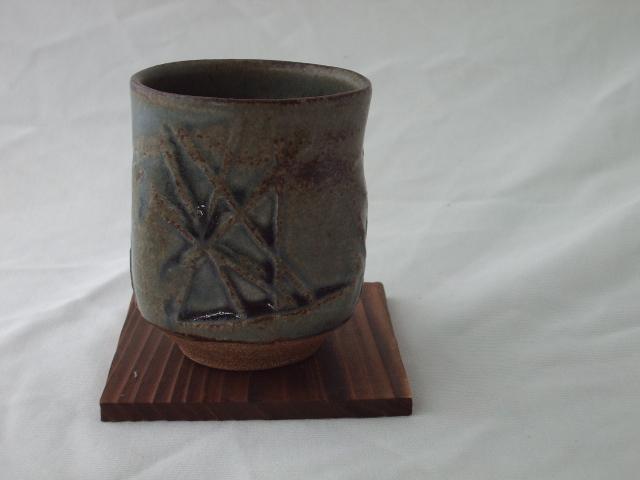
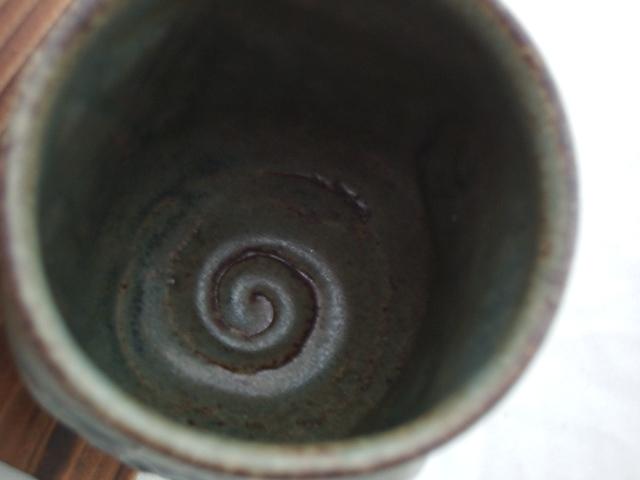
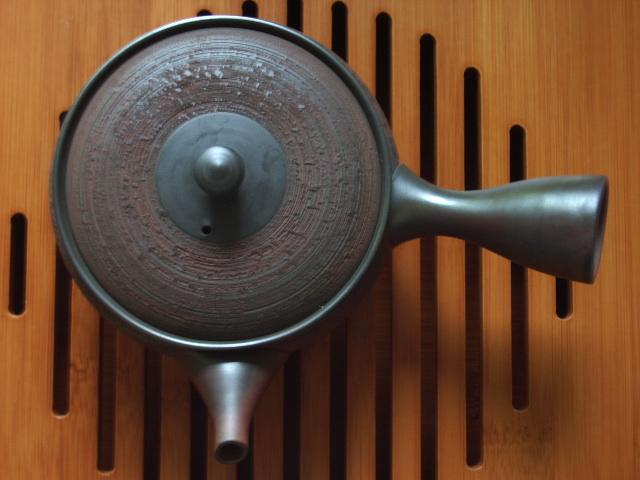

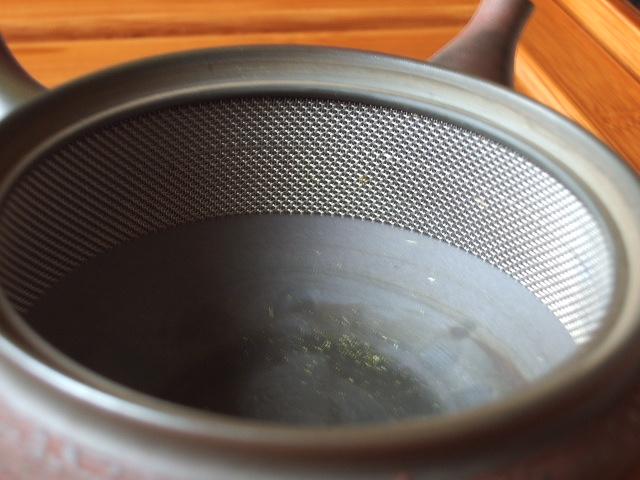


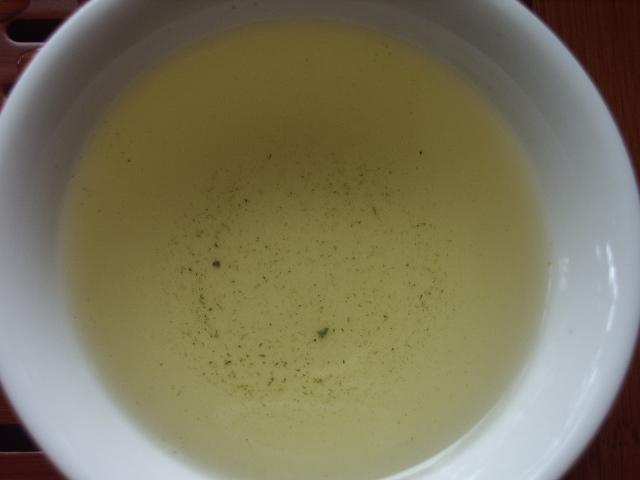
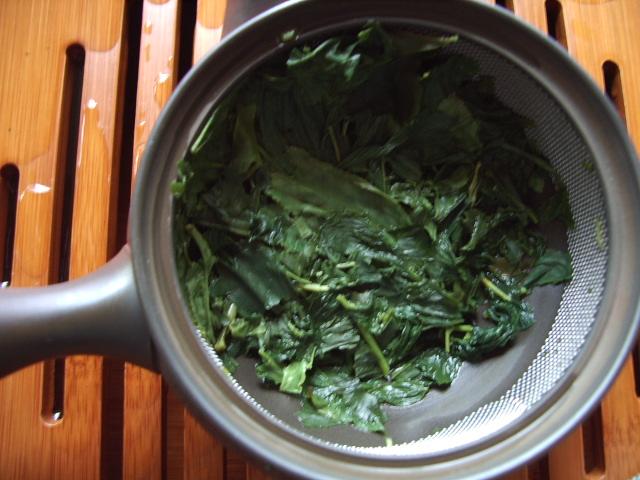
Chinese Green Teas
in Coffee & Tea
Posted
Dragon Well is one of my favorites, WmC. Sometimes I brew it in a gaiwan and sometimes drink it grandpa style.
You are fortunate to have found a high quality one, but even some of the lesser ones make more than decent green tea. At $15 per ounce that makes your morning Dragon Well less than a cup of coffee at McDonalds...and a LOT less than a cup of coffee at Starbucks.
Any other Dragon Well drinkers out there with brewing or sourcing suggestions?